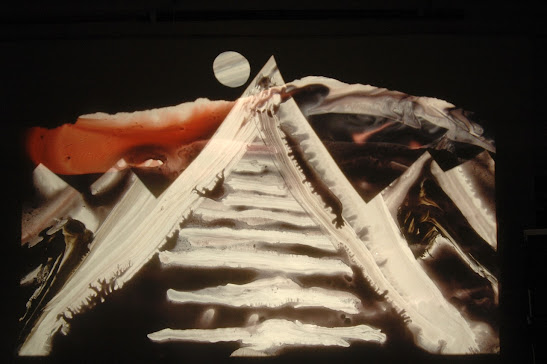Norman Perryman: A Life Painting Music
Excerpts from a memoir
Thursday, 14 November 2024
Songs of Changing Colours
Monday, 15 April 2024
The Passing of Time
Each year, as we gaze on the beauty of falling cherry-blossoms (a ritual in Japan), we are intensely aware that, when they are all fallen, like a movie, or a concert, there's nothing left - only memories.
I love the beauty of the short Japanese haiku poem. An art form reduced to essentials, it suggests movement and the passing of time, so we find ourselves reflecting on life.
Old pond
a frog jumps in
the sound of water
(Basho 1644-1694)
Yes, at 90, life seems to be passing by faster than it used to be and I'm reflecting a lot about this. But rather than dwelling on regrets, I'm inspired to use my remaining time to celebrate the beauty of the transient. I plan to create a series of short liquid kinetic images (perhaps based on music) in which clouds of colour float across my projection screen, then like nature, change or disappear. My little rivers of colour will become an ode to nature and my creative way of waving goodbye.
Many thanks to all you thousands of readers who have followed this blog since 2012. You can still find each one in the search bar on the lower right.
The Buddhist master of Mindfulness Thich Nhat Hahn, believed that the energy that we have shared will take on different forms, like changing clouds. My images have no digital limitations. They are forever universally available as part of the Cosmos. Who knows, you might also find some of them in the Cloud (YouTube?). _________________________________________________
Tuesday, 20 February 2024
The joys of intelligent listening
Wednesday, 8 November 2023
The Wound-Dresser












